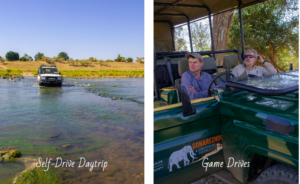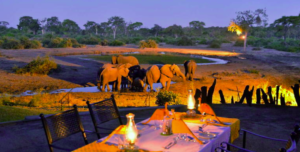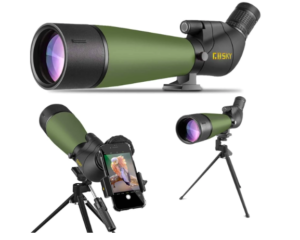Red Stag
A red stag, often known as a red deer (scientific name: Cervus elaphus), is one of Europe’s, Asia’s, and portions of North Africa’s biggest deer species. It is prized as a game animal by hunters due to its spectacular antlers and tough hunting experience.
Males (stags) are much bigger than females (hinds) and have a strong physique. Stags may weigh up to 400 pounds (180 kilogrammes) and stand up to four feet (1.2 metres) tall. During the rutting season, they have a reddish-brown coat with a lighter-colored rump patch and a dense neck mane.
Red stags are distinguished by their spectacular antlers. A red stag’s antlers are big and branching, with numerous points or tines. They can grow to be quite huge, with some individuals having antlers that reach upward and outward, earning them the title of “royal” or “monarch” stag. Each year, the antlers are lost and regrown, with age, genetics, and overall health influencing the size and intricacy of the antlers.
Outside of the mating season, red deer are gregarious animals that establish mixed-sex groups. During the rutting season, which usually occurs in the autumn, stags compete for dominance and mating privileges. To assert their authority, they make a characteristic roaring sound and engage in shows of power and violence.
Countries That Offer Red Stag Hunting
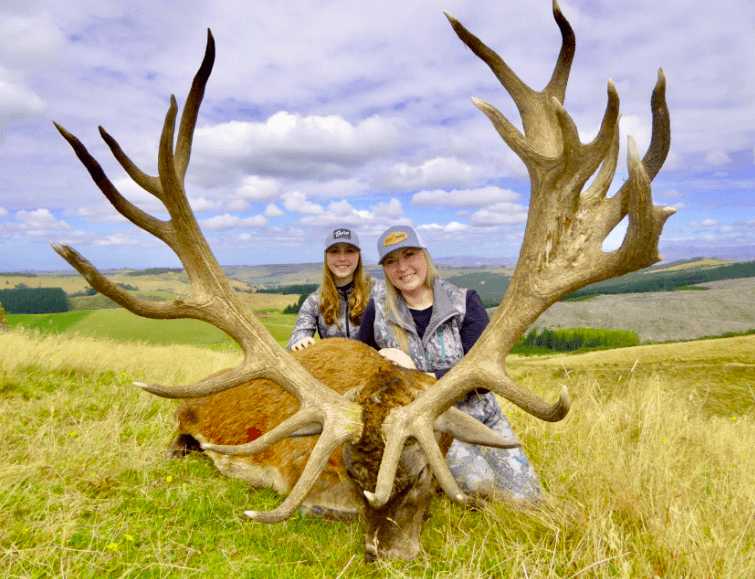
Hunting for red stags is popular in many nations with red deer populations, including the United Kingdom, New Zealand, Argentina, Spain, the Czech Republic, Romania, and others. Hunting restrictions and seasons differ from nation to country and region to country, and getting the right permissions and licences is usually required to partake in lawful hunting activities.
Explanation of red stag behaviours
Several variables impact red stag behaviour, including social hierarchy, territoriality, mating rituals, and communication. Here’s an explanation of some of the most common red stag behaviours:
Rutting Habits:
The rutting season, which usually occurs in the autumn, is an important time for red stag behaviour. Males fight for mating chances during this period. To express their authority and attract females, dominant stags build territories and participate in numerous displays.
Roaring:
During the rut, red stags generate tremendous roars known as “roaring.” These vocalisations are territorial cries used by males to advertise their arrival, exert authority, and attract females. The roar is a powerful, booming sound that may be heard over great distances.
Antler Display:
Red stags utilise their antlers to assert their authority and scare opponents. They perform antler displays such as parallel walks (two stags walking side by side) and frontal clashes (locking antlers and pushing against each other). These demonstrations of power form dominance structures.
Scent Marking:
Scent marking is used by red stags to announce their presence and create territorial boundaries. They brush their antlers and bodies against trees and foliage, leaving glandular fluids behind. These smell markings indicate the stag’s identification and reproductive condition.
Territoriality:
During the rutting season, dominant stags create and defend territories. They use scent marking to dissuade intruders and violent behaviours to mark the limits of their territory. A stag’s reproductive success and access to mates are frequently influenced by the size and quality of his territory.
Formation of a Harem:
During the rut, dominant stags amass a harem of receptive females. They vigorously pursue and herd hinds into their domains. Due to their displays, vocalisations, and physical characteristics, hinds are often drawn to the most dominant males.
Bachelor Groups:
Male red deer frequently establish bachelor groups outside of the rutting season. Young stags and adult males who are not dominant enough to establish their own territories or harems form these groupings. Companionship and safety in numbers are provided by bachelor groups.
Grazing Habits:
Red stags are mostly herbivorous, eating grasses, leaves, shoots, and other plants. They graze selectively, looking for nutrient-rich plants and foraging in open grasslands and woods. Grazing patterns assist to keep their environments healthy and diverse.
Red stag behaviour can vary depending on factors such as population density, age, individual variance, and environmental circumstances. Furthermore, while these behaviours give a basic insight, there may be variances within and among communities.
What is the life span of a Red Stag
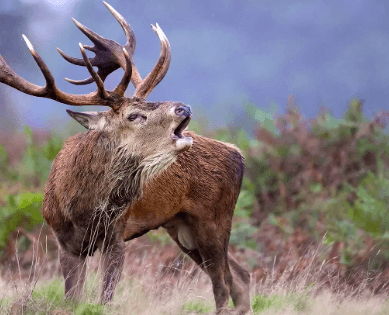
A red stag’s (Cervus elaphus) life duration can vary based on various factors, including habitat, population density, and individual conditions. A red stag’s life span in the wild is typically 10 to 15 years. Some people, however, have been known to survive for up to 20 years or more.
A red stag’s lifespan can be affected by a variety of things. The availability of sufficient habitat and food supplies is a critical issue. Red stags who have access to ample and high-quality feed, as well as enough shelter and protection, may live longer.
Furthermore, an individual red stag’s general health and genetics have a factor in determining its life span. Stags with strong immune systems and powerful physical attributes may be more resilient and have a better chance of surviving and living longer.
Predation, hunting pressure, sickness, and climatic circumstances are all reasons that might shorten the life of a red stag. Wolves and big cats, for example, can constitute a threat to red stags, especially younger or weaker animals. Hunting practises and management regulations in certain areas can also have an influence on the age structure and life span of red deer populations.
Red deer breeding explained
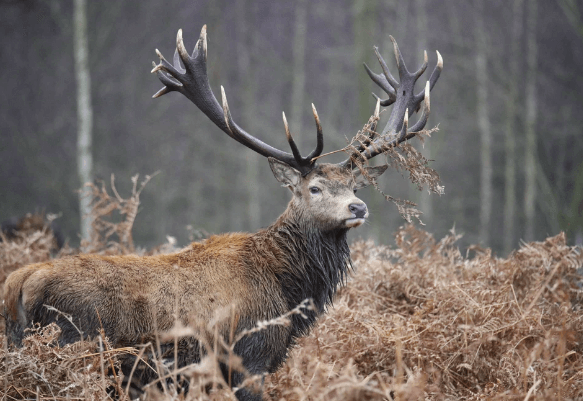
Natural mating behaviours, seasonal rutting times, and social dynamics all play a role in breeding red stags, also known as red deer. Here’s an explanation of the red stag breeding process:
Season of Rutting:
During the rutting season, red stags aggressively compete for partners and participate in breeding behaviour. It usually happens in the autumn, however the precise date varies based on where you live. Male red stags undergo physiological and behavioural changes throughout this period in preparation for mating.
Territory and Dominance:
During the rut, male red stags create dominance hierarchies and defend territory. Dominant stags, who are frequently the biggest and strongest, have easier access to mates and breeding prospects. To assert their authority and scare competitors, they engage in shows of power like as roaring, parallel walks, and antler clashes.
Roaring and Displays:
During the rut, red stags make characteristic roaring cries to attract females and alert other males to their location. The roars function as public declarations of their fitness and eagerness to mate. In addition to vocalisations, they participate in physical displays such as parallel walks, in which two stags move side by side, assessing one other.
Reproduction and lactation:
The fertilised eggs implant in the hind’s uterus after successful mating. Red deer gestation duration is around 230-240 days, resulting in the delivery of a single calf in the majority of instances. Calving usually occurs in late spring or early summer, when feed is plentiful and circumstances are favourable for calf survival.
It’s vital to remember that red stag breeding behaviours and dynamics might change depending on factors including population density, age structure, and environmental circumstances. Furthermore, the availability of resources, social contacts, and the general health and condition of people within the herd may all have an impact on red deer reproduction.
What’s a young red deer called?
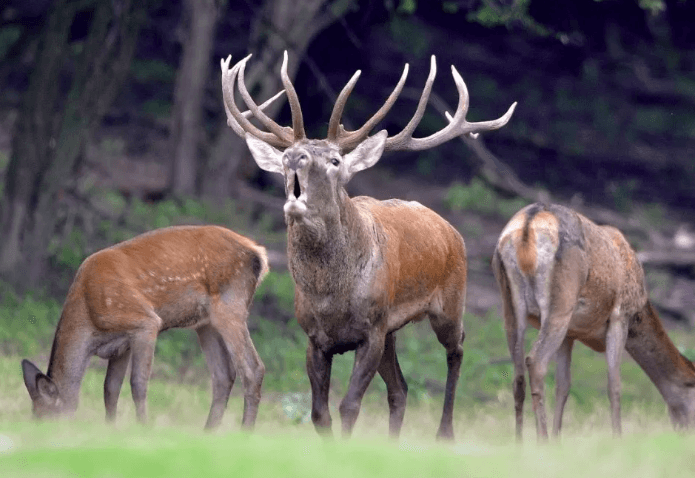
A juvenile red stag is referred to as a “spiker” or “spike.” This word refers to a juvenile male red deer whose antlers have not yet fully formed. Spikers have short, straight, unbranched antlers that are only beginning to grow. As the stag grows older, its antlers get longer and more complicated, with many points or tines.
Is red deer meat healthy?
Yes, red deer meat, often known as venison, is extremely nutritious and has several health advantages. Here are some of the most important nutritional features of red deer meat:
Lean Protein:
Red deer meat is a high-quality source of protein. It has a higher protein-to-fat ratio than many other meats, including beef. Protein is required for tissue construction and repair, immunological function, and a variety of physiological activities.
Essential Vitamins:
Vitamin B12, which is essential for neurological function and red blood cell synthesis, is found in red deer meat. It also contains vitamins B3 (niacin), B6, and riboflavin (B2), all of which help with energy metabolism and general wellness.
Minerals:
Red deer meat is high in iron, zinc, and selenium, among other nutrients. Iron is necessary for oxygen transport in the body and aids in energy production. Zinc is involved in a variety of enzymatic activities as well as immunological function, whereas selenium serves as an antioxidant and aids thyroid function.
Low in fat:
Red deer meat has a lower fat content than many other meats, including beef and pig. It has less saturated fat and cholesterol, making it a good choice for anyone looking for a lean protein source.
Fatty Acids Omega-3:
Red deer meat is high in omega-3 fatty acids, which are good for your heart and have anti-inflammatory qualities. While the omega-3 level is lower than that of fatty fish, it nonetheless contributes to a good nutritional balance.
Low in sodium:
Red deer meat has a lower salt level than processed meats, making it ideal for people on low-sodium diets or who are worried about their sodium intake.
It should be noted that the nutritional makeup of red deer meat varies depending on factors such as the animal’s diet, age, and overall health. Furthermore, the nutritional composition of different slices of meat may change slightly. Moderation and balance in overall dietary consumption, like with any food, are essential for good nutrition.
Red stag meat taste
Red stag meat, usually known as venison, is prized for its distinctive flavour and culinary capabilities. Red stag meat has a flavour that is rich, lean, and powerful. Here are some of the most prevalent features and flavours associated with red stag meat:
Earthy and rich:
The flavour of red stag meat is unique and robust, typically characterised as rich and earthy. It has a rich flavour that distinguishes it from other meats.
Tender and lean:
Red stag meat is thinner than beef and has less marbling. When cooked properly, it may still be soft and succulent. The meat’s leanness adds to its distinct texture and mouthfeel.
Gamey:
Red stag meat has a slightly gamey or wild flavour. This trait is caused by the deer’s natural food and lifestyle. It contributes to the distinct flavour character that many people enjoy.
Versatile:
Red stag meat is versatile and may be utilised in a variety of dishes. It may be grilled, roasted, pan-seared, or included into stews and braises. It complements fragrant herbs, spices, and sauces.
Unique Aroma:
Red stag meat has a peculiar scent that is typically characterised as earthy, savoury, and somewhat sweet when cooked. The scent enhances the whole sensory experience of eating beef.
Red deer FAQs answered
What distinguishes red deer from other varieties of deer?
Red deer (Cervus elaphus) are a big deer species with a reddish-brown coat. In terms of size, appearance, and habitat, they differ from other deer species such as white-tailed deer and fallow deer.
Where can you see red deer in the wild?
The red deer is indigenous to Europe, Asia, and portions of North Africa. They have been brought to a number of nations worldwide, including New Zealand, Argentina, Australia, and portions of North America.
How big do red deer get?
Stags, or male red deer, can weigh over 400 pounds (180 kilogrammes) and reach four feet (1.2 metres) tall at the shoulder. Females, known as hinds, are smaller and typically weigh approximately 200 pounds (90 kilogrammes).
What do red deer eat?
Red deer are herbivores that eat grasses, forbs, leaves, shoots, and bark. Their nutrition might vary based on the plants available in their area.
Do red deer antlers fall off?
Yes, red deer shed their antlers every year. Antlers are normally removed in late winter or early spring and begin growing again quickly.
How long do red deer live?
Red deer in the wild normally live 10 to 15 years, while some individuals have been known to live longer. Habitat, genetics, and environmental circumstances can all have an impact on their lifetime.
Do red deer migrate?
Red deer populations can migrate, particularly in places such as Europe. Some groups migrate seasonally in search of food and water, whilst others may be more sedentary or localised.
Are red deer endangered?
Red deer are not classified an endangered species. However, depending on their geographic location and local conservation efforts, the conservation status of certain populations or subspecies might vary.
Is it possible to domesticate red deer?
Red deer are seldom totally tamed animals. They may be raised in captivity in semi-domesticated conditions, but many of their wild instincts and behaviours remain.
Is hunting red deer legal?
Red deer hunting rules differ by country and location. Red deer hunting is lawful and controlled in some locations during particular seasons, with required permits and licences. When shooting red deer, it is important to adhere to local rules and restrictions.
How do red deer communicate?
During the rut, males employ numerous vocalisations, including roaring, to attract females and establish dominance. They also use body language to communicate, including as posturing, tail motions, and ear locations.
When is the red deer mating season?
Red deer mating season, or rut, normally occurs in the autumn. Males compete for females at this period by performing vocal displays, antler clashes, and territorial behaviours.
How many offspring do red deer have at one time?
Red deer hinds typically give birth to a single calf, but twins are possible but uncommon. Calves are often born in the late spring or early summer.
Related
- Legendary Roar: Red Stag Hunting in the Majestic Land of New Zealand
- Hunting on Catalina Island, Unleashing Adventure:
- Gemsbok Hunting in Texas: A Thrilling Safari Experience in the Lone Star State.
- Unleashing the Adventure: Springbok Hunting in Texas – Your Ultimate Guide.
- Eland Hunting in Texas” Unleash Your Adventurous Spirit:




